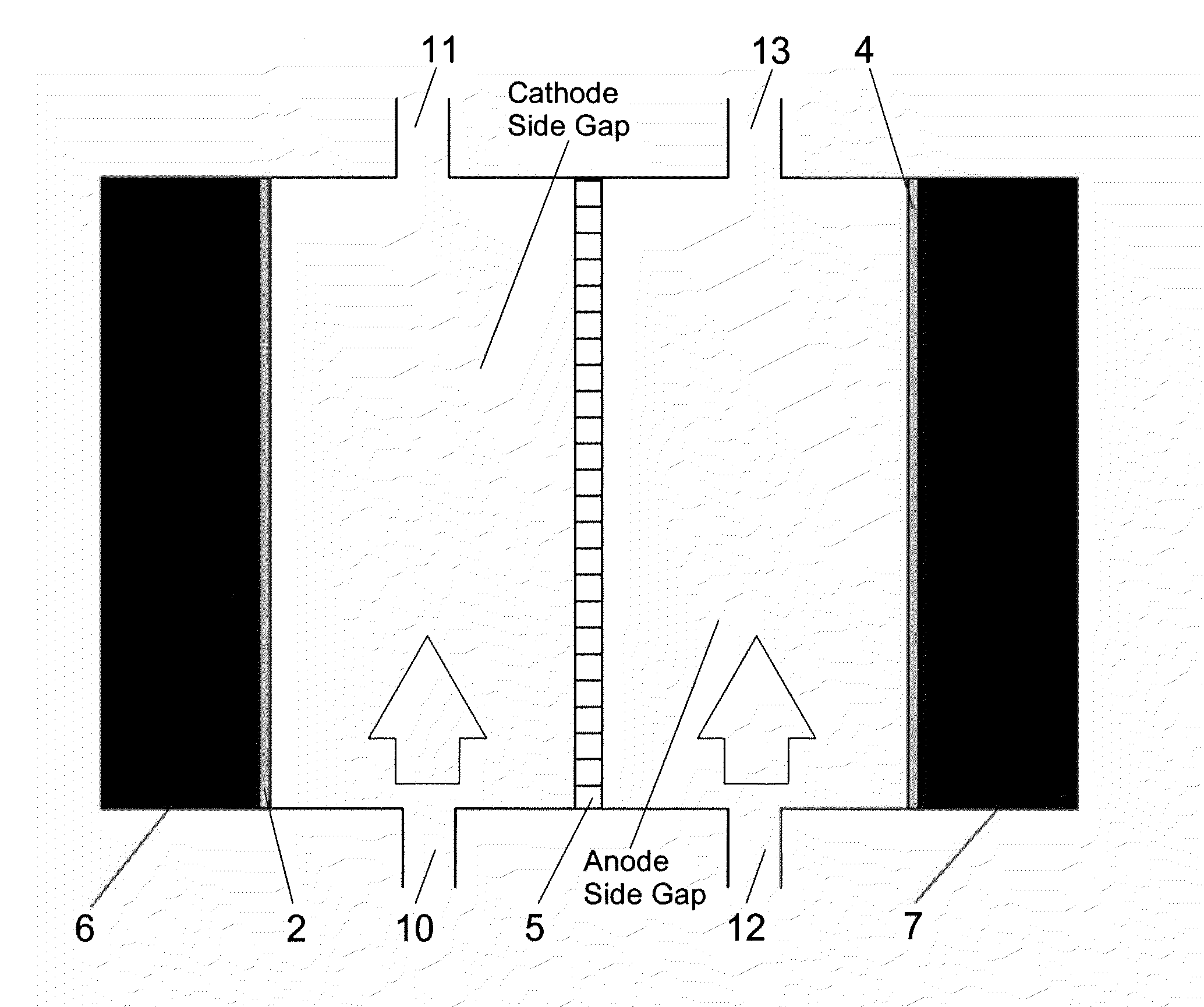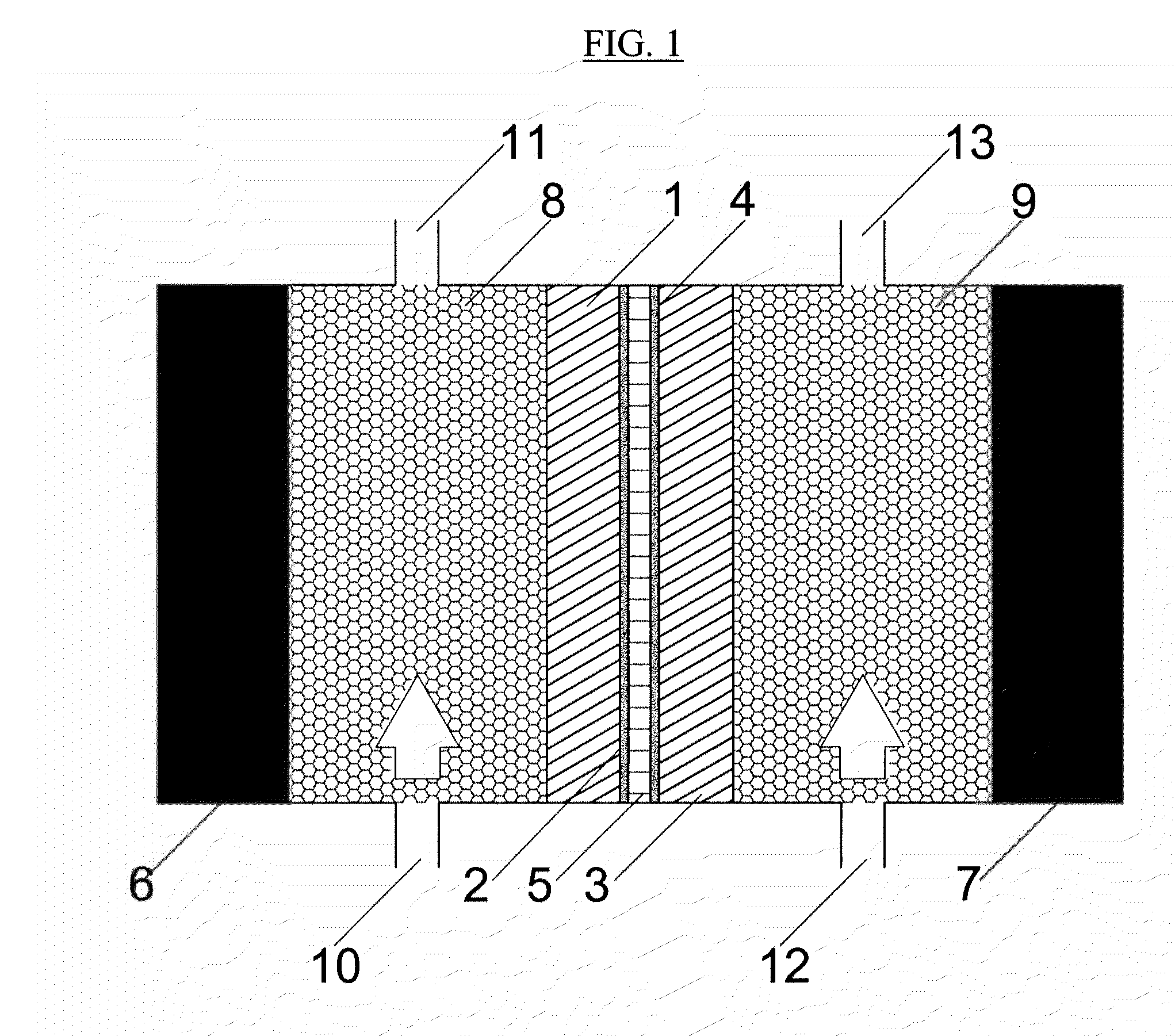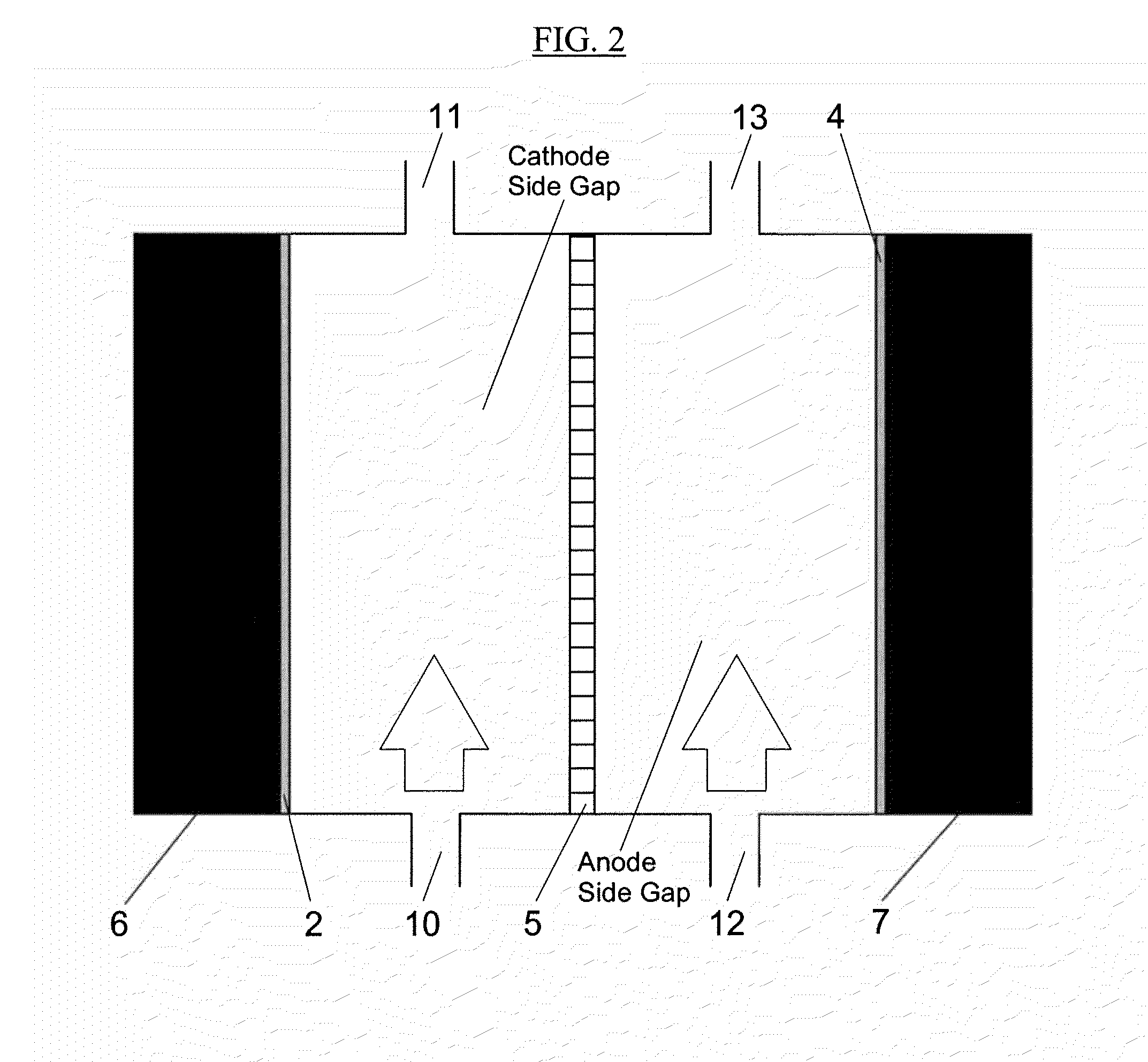Electrolysis Cell for the Conversion of Cuprous Chloride in Hydrochloric Acid to Cupric Chloride and Hydrogen Gas
a technology of electrolysis cell and hydrochloric acid, which is applied in the direction of electrolysis process, electrolysis components, diaphragms, etc., can solve the problems of increasing the cost of hydrogen production
- Summary
- Abstract
- Description
- Claims
- Application Information
AI Technical Summary
Problems solved by technology
Method used
Image
Examples
example 1
Half-Cell Studies
[0082]Half-cell electrochemical experiments were initially carried out to investigate whether each half-cell reaction could generate a current density of at least 0.1 A·cm−2 at relatively low overpotentials.
[0083]The polarization curves obtained for the oxidation of cuprous chloride in stirred and unstirred 1.0 M CuCl in 6 M HCl solutions are shown in FIG. 4. The polarization curves shown in FIG. 4 were recorded for a platinized EC-TP1-060 Toray Carbon Fiber Paper electrode, 19.6% platinum loading, in a 1.0 M CuCl in 6 M HCl solution. Data is presented for both unstirred and stirred solutions. The stirred solution was stirred using a magnetic stirring bar rotating at 220 rpm. The sweep rate was 0.5 mV·s−1 and the temperature was ambient.
[0084]The polarization curve recorded for the hydrogen production reaction in an unstirred 6 M HCl solution is shown in FIG. 5. The polarization curve shown in FIG. 5 was recorded for a platinized Carbon Fiber Paper electrode with 19...
example 2
Single-Cell Studies Using an Anion Exchange Membrane
[0091]Single-cell experiments were carried out to verify the data reported by Dokiya and Kotera as well as to verify the results from the half-cell studies.
[0092]FIG. 7 shows plots of current density versus time, which were recorded at the two applied potentials indicated on the figure. The anode and cathode are platinized EC-TP1-060 Toray Carbon Fiber Paper with 18.7% platinum loading. The catholyte was 6 M HCl and the anolyte was 1.5 M CuCl in 6 M HCl. A Selemion AMV anion exchange membrane (manufactured by Asahi Glass Co., Ltd.) was used to separate the anolyte (1.5 M CuCl in 6 M HCl) from the catholyte (6 M HCl). The temperature was ambient. At 0.8 V the current density decayed with time reaching a value of 0.0065 A·cm−2 after 10 minutes. At 1.2 V the current density stabilized at 0.0265 A·cm−2 after about 15 minutes. Both of these values are much lower than the current density expected from the half-cell study. Similar results...
example 3
Single-Cell Studies Using a Cation Exchange Membrane
[0094]The half-cell experiments were confirmed only when an electrolysis cell incorporating a proton exchange membrane was used to carry out the electrolysis reaction. A polarization curve recorded during a single-cell electrolysis experiment is shown in FIG. 8. In this experiment a Nafion® NRE-212 proton exchange membrane separates the cathode compartment from the anode compartment. The experimental data shown in this figure was obtained using the wide-gap-cathode / hybrid-anode configuration. The gap between the cathode and the PEM was 1 mm. The catholyte (6 M HCl) and anolyte (1.0 M CuCl in 6 M HCl) solutions were each housed in 4 L volumetric flasks (reservoirs). The cathode electrocatalyst was 20% platinum on XC-72R painted onto a graphite separator plate. The anode was electrocatalyst free with the hybrid configuration being used. The solutions were pumped through their respective compartments at a flow rate of 1 L·min−1 using ...
PUM
| Property | Measurement | Unit |
|---|---|---|
| Molar density | aaaaa | aaaaa |
| Molar density | aaaaa | aaaaa |
| Molar density | aaaaa | aaaaa |
Abstract
Description
Claims
Application Information
 Login to View More
Login to View More - R&D
- Intellectual Property
- Life Sciences
- Materials
- Tech Scout
- Unparalleled Data Quality
- Higher Quality Content
- 60% Fewer Hallucinations
Browse by: Latest US Patents, China's latest patents, Technical Efficacy Thesaurus, Application Domain, Technology Topic, Popular Technical Reports.
© 2025 PatSnap. All rights reserved.Legal|Privacy policy|Modern Slavery Act Transparency Statement|Sitemap|About US| Contact US: help@patsnap.com



